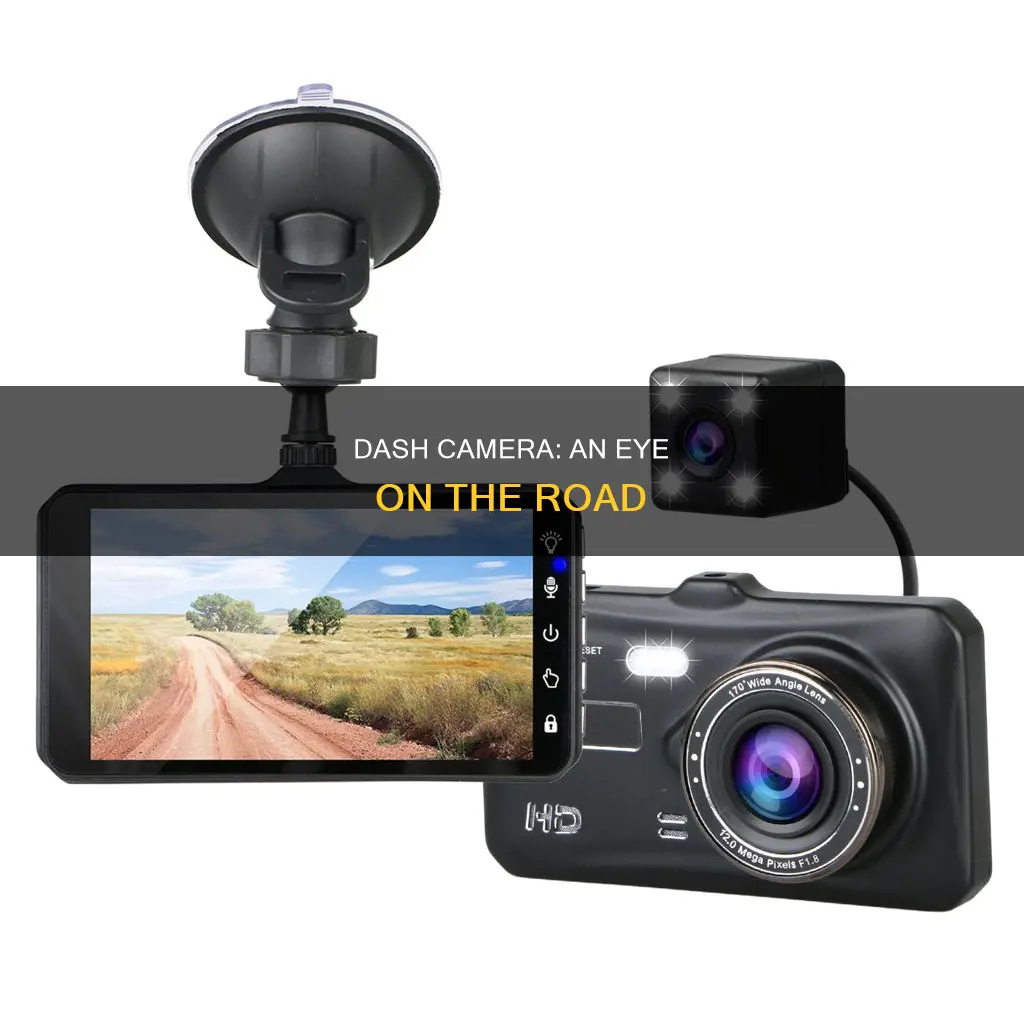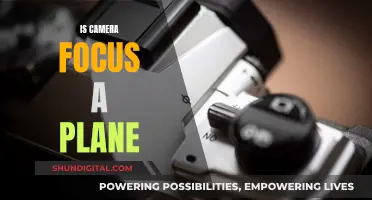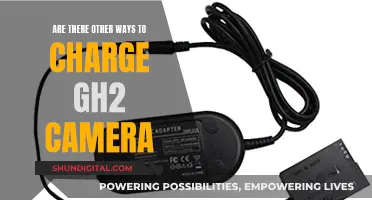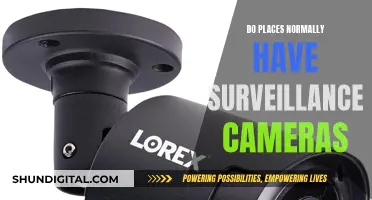
A car dash camera, or dashcam, is a device that is mounted on a vehicle's dashboard or windshield and continuously records the view through the front windscreen and sometimes the rear or other windows. Dashcams are often equipped with features such as loop-cycle recording, night vision, and parking surveillance modes, and can be vital in providing video evidence in the event of a crash or accident. They can also be used to monitor new or young drivers and can be connected to a smartphone via an app.
| Characteristics | Values |
|---|---|
| Definition | A camera mounted on a vehicle's dashboard or windscreen to record what's happening on the road |
| Purpose | To act as a "silent witness" in the event of accidents and provide video evidence |
| Other Uses | Capturing road trips, monitoring new drivers, recording inside the vehicle, and protecting against insurance fraud |
| Mounting Options | Dashboard, rear-view mirror, or windscreen using a suction cup or adhesive tape |
| Camera Options | Front-facing, rear-facing, cabin camera (inside viewing), or a combination |
| Recording Quality | Standard resolution is Full HD or 1080p, but higher resolutions like 1296p, 1440p, and 4K are also available |
| Recording Features | Loop-cycle recording, automatic incident detection, night vision, and trusted timestamping |
| Storage | SD cards (MicroSDHC or MicroSDXC), internal memory, or cloud storage |
| Power Source | Vehicle's electrical system, cigarette lighter socket, or hardwired into the electrical system |
| Additional Features | GPS, Wi-Fi, Bluetooth, 4G connectivity, and driver assistance systems |
What You'll Learn

Dash cams can be used to record inside a car
A dash cam or dashboard camera is a device that is mounted on your vehicle's dashboard or rear-view mirror. While the name implies that the camera is attached to a car's dashboard, different cameras attach in a variety of ways.
These in-cabin dash cams, or IR dash cams, are equipped with infrared lights that provide recording details in poorly lit conditions, as well as in total darkness. This is particularly useful for drivers who often work at night or in low-light conditions.
Some dash cams have a separate external or "remote" second lens that connects to the main unit through a small cable, while others have two lenses built into one single unit. The secondary "remote" camera lens can be positioned anywhere inside the vehicle to fit your needs. It could record the driver's window or keep an eye on valuable tools or cargo located elsewhere in the car.
In addition to recording the interior of the vehicle, some dash cams also offer other features that can benefit drivers. For example, some dash cams have a built-in GPS that can track the vehicle's speed and location. This can be useful for drivers who want to monitor their speed or keep a record of their route.
Another feature that can be beneficial to drivers is cloud capability, which allows drivers to remotely view live footage, track vehicles in real time, and get instant notifications of incidents. This can be especially useful for drivers who want to keep an eye on their vehicle when they are not in it or for fleet managers who need to monitor multiple vehicles.
Overall, dash cams that record the interior of a vehicle can be a valuable tool for drivers, providing safety, security, and peace of mind on the road.
Capturing Sports Action: Keeping Your Camera in Sports Mode
You may want to see also

They can provide evidence in the event of a crash
A car dash camera, or dashboard camera, is a device that is mounted on a vehicle's windscreen or dashboard. It acts as a "silent witness" in the event of accidents, recording every detail that takes place on the road. Dash cams can be extremely useful in the event of a crash, providing evidence and saving drivers money in the long run.
In the event of a crash, dash cams can provide unbiased evidence of what happened. This can be extremely valuable in determining fault and assigning responsibility for the accident. The footage can be used to support insurance claims and civil cases, as well as protect against insurance fraud. It can also help to resolve questions about what happened, especially in cases where there may be conflicting witness accounts.
Additionally, dash cams can capture important details such as the date, time, speed, and location of the incident through built-in GPS capabilities. This data can be crucial in verifying the authenticity and accuracy of the footage, as well as providing context to the events leading up to the crash.
It is important to note that dash cam footage can also be used against the driver if they are found to be at fault or breaking any laws. This includes instances of reckless driving, speeding, or illegal lane changes. In some cases, the audio recorded by the dash cam may also be used as evidence, such as in cases of distracted driving or if a conversation is relevant to the incident.
While dash cam footage can be extremely valuable, it is not always admissible in court. The admissibility of the footage may depend on the jurisdiction and the relevant laws in that area. For example, some states have wiretapping and privacy laws that may prevent the use of dash cam footage that includes audio recordings. Additionally, the footage must be of suitable quality and must be recorded in a public place to be considered as evidence.
Overall, dash cams can be incredibly useful in the event of a crash, providing valuable evidence and protecting drivers from false accusations or insurance fraud. However, it is important to be aware of the potential drawbacks and legal implications of using dash cam footage, and to consult with a lawyer before submitting any evidence.
Troubleshooting Guide: Computer Not Recognizing Camera
You may want to see also

They can be used to monitor new drivers
A car dash camera, or dashboard camera, is a device that is mounted on a vehicle's dashboard or windshield and continuously records the view through the front windscreen and sometimes the rear or other windows. They can be used to monitor new drivers in several ways.
Firstly, dash cams can provide a record of how young or inexperienced drivers are handling their new responsibilities. This can be useful for parents or guardians who want to keep an eye on their children's driving habits and behaviour. The footage can help identify areas where the new driver may need additional guidance or improvement, such as lane departure warnings or forward collision alerts.
Additionally, dash cams with built-in GPS capabilities can provide location and speed data, allowing parents or guardians to track the whereabouts of their children's vehicles. This feature can also help address aggressive driving habits and ensure the new driver is adhering to speed limits and safe driving practices.
Dash cams with parking surveillance features can also be beneficial for new drivers. They can record incidents that occur when the vehicle is parked, such as hit-and-runs or vandalism. This can provide valuable evidence for insurance claims and help new drivers feel more secure when leaving their vehicle unattended.
Furthermore, some dash cams have a cabin or interior camera that records the inside of the vehicle. This feature can be particularly useful for monitoring new drivers who are frequently transporting passengers. It allows parents or guardians to ensure their children are driving safely and responsibly when others are in the car.
Dash cams also provide peace of mind and an extra layer of protection for new drivers. In the event of an accident or incident, the footage can help resolve questions about what happened and provide objective evidence to insurance companies and law enforcement. This can help protect new drivers from false accusations or unfair blame and ensure they are not wrongly penalised.
Overall, dash cams offer a discreet and effective way to monitor new drivers, providing valuable insights into their driving behaviour and offering an extra layer of security and protection on the road.
RAW Files: Camera Limitations and Workarounds
You may want to see also

They can be used to record road trips
Dash cams are a great accessory for recording your road trips. They can capture the beautiful scenery and diverse environments you encounter on your journey, from rugged mountains to pristine lakes and lengthy beaches. With a dash cam, you can easily record your entire trip or break it down into clips of the most scenic drives.
When choosing a dash cam for recording your road trip, there are a few key features to consider:
- Video Quality: Look for a camera that records in at least 1080p Full HD resolution. A wide-angle lens with 4K resolution is even better for capturing those scenic drives in crystal-clear detail.
- GPS Tracking: This feature will allow you to track your route and record the locations of your videos, making it easy to revisit or share landmarks and points of interest.
- LCD Screen: While not a requirement, a built-in LCD screen can be helpful for adjusting camera settings and ensuring you're capturing the best footage, depending on lighting and camera positioning.
- Smart Features: Look for dash cams with app or cloud connectivity, so you can easily view, save, and share your footage. Some smart features even include notifications for upcoming speed cameras or road hazards, keeping you safe and informed.
- Connectivity: A solid Bluetooth connection will allow you to manage settings and videos through your smartphone app. Dual-band Wi-Fi ensures you stay connected and enables easy software updates and cloud storage.
- Voice Control: If you're travelling alone, voice control can be a handy feature, allowing you to operate your dash cam while keeping your hands on the wheel and your eyes on the road.
When recording your road trip, don't forget to enable audio recording if you want to capture the conversations and laughter along the way. And, if you want to capture still images, many dash cams offer the ability to take pictures without interfering with your video footage.
So, whether you're embarking on a cross-country adventure or a scenic drive along the coast, a dash cam can be the perfect companion to capture all the memorable moments of your journey.
Unleashing the Potential: 32GB Memory Card's Camera Capacity
You may want to see also

They can be used to monitor a delivery fleet
A car dash camera, or dashboard camera, is a device that is mounted on a vehicle's dashboard or windshield and continuously records the view through the front windscreen and sometimes the rear or other windows. They can also record the interior of the car in 360 degrees. Dash cams are often equipped with features such as night vision, parking surveillance, and advanced driver-assistance systems (ADAS).
Dash cams are particularly useful for monitoring a delivery fleet. They can help to ensure the safety of drivers and reduce the risk of accidents by monitoring and improving driving behaviour. For example, dash cams with AI capabilities can detect distracted driving, such as texting, eating, or applying makeup while driving, and alert drivers in real time. This technology can also be used to monitor and improve the safety performance of the entire fleet by identifying areas where drivers are frequently distracted or exhibiting unsafe behaviours.
In addition to improving safety, dash cams can also help to optimise delivery routes and reduce costs. By combining dash cam footage with a fleet management system (FMS), fleet managers can review comprehensive reports on routes, speed, and driver behaviour. This data can be used to identify more efficient routes, reduce fuel costs, and improve delivery times.
Furthermore, dash cams can provide valuable evidence in the event of an accident or dispute, helping to exonerate drivers and reduce insurance premiums. The video recordings can be used as proof that a driver was not at fault, which can be crucial for insurance claims and legal proceedings.
Overall, dash cams are a valuable tool for monitoring a delivery fleet, improving safety, optimising operations, and reducing costs.
Fight Camera Tickets: Culver City's Legal Options
You may want to see also
Frequently asked questions
A car dash camera, or dashboard camera, is a device that is mounted on your vehicle's dashboard or windshield and continuously records the view through the front windscreen and sometimes the rear or other windows.
The primary purpose of a car dash camera is to provide video evidence in the event of accidents or insurance fraud. It can also be used to monitor new or young drivers and offer protection against police corruption.
Dash cameras record in a continuous loop, overwriting previous footage once the storage is full. They are usually powered by the vehicle's electrical system or battery and can be plugged into the cigarette lighter socket or hardwired. Some dash cams also have rechargeable batteries.
When choosing a dash camera, consider the resolution, frame rate, wide-angle lens, night vision, and whether you need additional features like GPS, Wi-Fi, or audio recording. Also, ensure the camera has a suitable mounting option and is designed for your climate.







